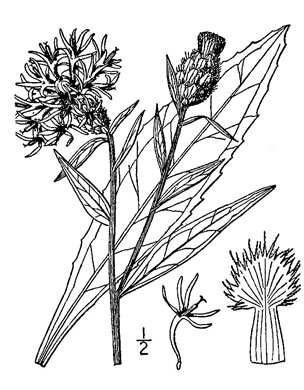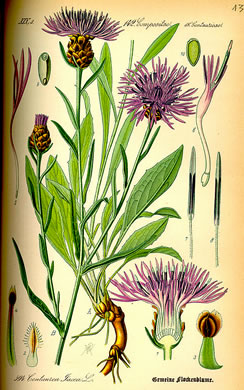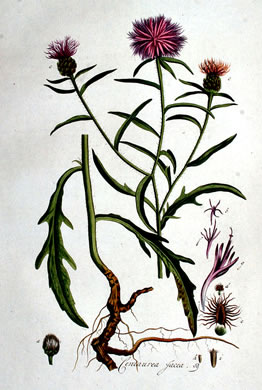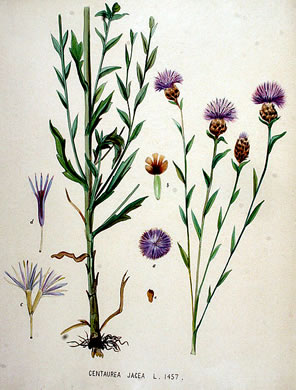Spermatophytes (seed plants): Angiosperms (flowering plants): Eudicots: Core Eudicots: Asterids: Campanulids: Asterales
WEAKLEY'S FLORA OF THE SOUTHEASTERN US (4/24/22):
Centaurea jacea
FAMILY
Asteraceae
Go to FSUS key
Dig deeper at SERNEC, a consortium of southeastern herbaria.
Check out EDDMapS.org to see where this has been reported.
Read more about Brown Knapweed at Vascular Plants of North Carolina.
SYNONYMOUS WITH
PLANTS NATIONAL DATABASE:
Centaurea jacea
FAMILY
Asteraceae
SYNONYMOUS WITH Flora of North America north of Mexico, vol. 19-20-21 (2006)
Centaurea jacea
COMMON NAME:
Brown Knapweed
To see larger pictures, click or hover over the thumbnails.
Janus (Jan) Kops, Flora Batava wik_centaurea_jacea_v1
An illustration from Kops' Flora Batava, in the public domain.
Janus (Jan) Kops, Flora Batava wik_centaurea_jacea_v19
An illustration from Kops' Flora Batava, in the public domain.
WEAKLEY'S FLORA OF THE SOUTHEASTERN US (4/24/22):
Centaurea jacea
FAMILY
Asteraceae
SYNONYMOUS WITH
PLANTS NATIONAL DATABASE:
Centaurea jacea
FAMILY
Asteraceae
SYNONYMOUS WITH
Flora of North America north of Mexico, vol. 19-20-21
Centaurea jacea
If a search such as "Carex leptalea var. leptalea" doesn't deliver the results you want, try "Carex leptalea".
Or, to minimize chances of a misspelling, try just "Carex le".
Less is more: If "pencil flower" doesn't deliver the results you want, try "pencil".





